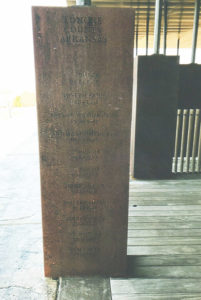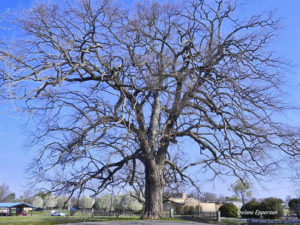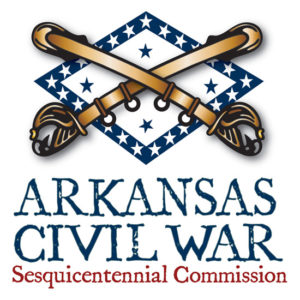calsfoundation@cals.org
The Encyclopedia of Arkansas as a Tool of Social Coordination
I’ve been pondering matters of terminology quite a bit here lately—namely, the limits of our words to capture anything like reality.

This stems, in large part, from my own research into racial violence. There are fantastic debates among historians, sociologists, political scientists, and more about whether the term race riot is a useful descriptor that should continue to be employed. After all, what observable factors demarcate a riot in general, and what makes something a race riot in particular? Does not the term “race riot” contain a fair amount of historical baggage, especially the revelation in current reporting that it was the victims of the violence who, in fact, were doing the supposed rioting? How does a term like race riot compare with other terms like lynching or massacre? And finally, for those who want to abandon the term, what word or words should be used to designate the phenomenon previously known as the race riot? The historian David F. Krugler proposed “anti-black collective violence,” but that is a phrase that, while perhaps more accurate, does not exactly roll off the tongue, and as any advertising executive will tell you, if you want something to stay in people’s minds and on their lips, it has to be punchy, short, and memorable.
But this takes us to a fact of our shared reality: “Language is not good for capturing and transmitting the details of reality. What it’s good for is providing landmarks we can coordinate around.” That’s the thesis of N. J. Enfield’s new book, Language vs. Reality: Why Language Is Good for Lawyers and Bad for Scientists, which I am currently reading. Language is a mechanism for social coordination that has been worked at over generations upon generations and that is largely dependent upon both speaker and listener having some idea of our immediate shared situation.
One example Enfield employs is the word spoon. That one syllable can designate anything from a cheap plastic spoon to a valuable piece of grandmother’s silver to a wooden object with which one might stir a pot of stew. Yet if I utter the question “Would you hand me a spoon?” while we are eating Mexican takeout on a park bench, sitting down at a nice family dinner, or standing before the stove in front of a bubbling pot, the chances are that you would coordinate your action response appropriately and not expect me stir this pot of gumbo with a chintzy plastic jobber. If you don’t, I will have to use more words, and maybe you will, too, until we finally coordinate properly.
“Language is often seen as a link between a person and the world,” writes Enfield. “But this overlooks something important about how language works. When you use the word for something, there is not only a link between the word and the thing you are referring to, but also, and always, a link between you and the person you are talking to.”
This assertion hearkens back to some of the earliest philosophical debates of Greek philosophers like Plato and Aristotle who believed that they could approach something like fundamental reality, metaphysics, through the practice of dialectics, and they criticized the rival schools of the Sophists, who emphasized “success in political and forensic oratory,” and thus developed “specialized techniques of persuasion and argument.” The Sophists were criticized for their relativism for asserting that our knowledge of something depends upon our particular points of view, that words like hot or cold might mean something to people of different temperaments. Thus the term sophistry, which has come down to us, thanks to those who opposed their teachings, as signifying an assemblage of elaborate verbiage that hides one’s own ignorance or reveals one’s embrace of the solely arbitrary.
But one of the realities I have had to confront in my work with the CALS Encyclopedia of Arkansas is the somewhat arbitrary nature of the categories we impose upon the brute facts of the world. Take the difference between trees, shrubs, and vines, summed up by our author thusly:

“Trees are defined as perennial, woody plants that are greater than five meters (sixteen feet) in height at maturity; they often have a single stem or relatively few stems. Shrubs are defined as perennial, often multi-stemmed woody or semi-woody plants usually less than five meters (sixteen feet) in height at maturity. This includes the bamboo members of the grass family (which may be taller), yuccas, the highbush members of the genus Rubus (blackberries and raspberries), prickly-pear cacti, and dwarf palmettos. Woody vines are defined as perennial, woody or semi-woody twining, climbing, or trailing plants with relatively long stems. In some cases, these may not appear especially ‘woody’ (e.g., the trailing or dewberry members of the genus Rubus and some greenbriers in the genus Smilax), but their stems do not die back to the ground in winter.”
There is a lot of room to move between these various categories, and in case you missed it, there are other words in these definitions crying out for explanations of their own. What makes something “woody,” after all?
My mother likes to tell the story of a trip we took when I was very young, during which she started a game of pointing out other vehicles on the road and asking me if that one was a car or truck. I had apparently just learned these categories and was great at answering until she aimed her finger at an El Camino and asked me what that was. According to her, I stared at it for the longest time before finally answering: “Car-truck!” And thus are ontological quandaries sidestepped with hyphens. My Aunt Aljean had an El Camino that I became obsessed with as a kid. Maybe I’ve always had a thing for violations of categorical norms.
Because what is the formal difference between a truck and a car? We use those words to coordinate our actions (“I’ll bring the truck around” or “Keep an eye out for my car”) but, if pressed, could not come up with a firm definition of one that couldn’t bleed over into the other. Consider that Swedish phenomenon of the epa-traktor (also called the A-traktor). During World War II, Swedish farmers experienced considerable difficulty acquiring farm equipment and so often modified domestic automobiles to serve in the place of missing tractors. The phenomenon has survived the years because the minimum age for obtaining a driver’s license in Sweden is eighteen, but a license for an officially registered farm tractor can be had at sixteen, and so many Swedish youths today, especially in rural areas, often buy used cars to modify and register as tractors. Does this make these cars tractors?
 Recently, I added a chart of executions to our entry on capital punishment. Now, we largely treat executions as constituting a phenomenon distinct from other lethal events, such as lynchings, based upon the power of the state lying behind them. But consider the case of Charles Jones, arrested for having allegedly attempted to commit an act of rape. He was captured, after which he stood trial and was executed, perhaps within a space of time as short as twenty minutes, including his arraignment and the jury selection. Although he formally stood trial, it will probably not surprise you that Jones shows up on many lists of lynching victims, his trial being recognized as a sham even by the standards of legal fairness employed against African Americans at the time. Consequently, Jones’s killing shows up on both our charts of executions and lynchings.
Recently, I added a chart of executions to our entry on capital punishment. Now, we largely treat executions as constituting a phenomenon distinct from other lethal events, such as lynchings, based upon the power of the state lying behind them. But consider the case of Charles Jones, arrested for having allegedly attempted to commit an act of rape. He was captured, after which he stood trial and was executed, perhaps within a space of time as short as twenty minutes, including his arraignment and the jury selection. Although he formally stood trial, it will probably not surprise you that Jones shows up on many lists of lynching victims, his trial being recognized as a sham even by the standards of legal fairness employed against African Americans at the time. Consequently, Jones’s killing shows up on both our charts of executions and lynchings.
We encounter this sort of fuzziness at the Encyclopedia of Arkansas on a regular basis. Consider those communities that never incorporated and maybe now only exist in memory. Sometimes, there is no real town there, but the township name gets used in its stead. Sometimes, these settlements bleed into each other so that it is difficult, after the fact, to tell where one began and another ended. Also, what exactly is the difference between a creek, a stream, and a river—or a pond versus a lake? Depending upon who developed the map in question, the same feature may be labeled differently.
One of our favorite examples of this from several years back related to the Civil War Sesquicentennial, as we had received a grant to develop entries on many of the military events that occurred in Arkansas between 1861 and 1865. The master collection of war reports called The War of the Rebellion designates each events with specific terminology such as action, affair, attack, battle, engagement, or skirmish. How are these defined? What is the difference between a skirmish and an affair? Well, skirmish is officially defined as: “Encounter usually incidental to larger movements. A slight fight.” The word affair is so helpfully defined as: “A fight.”
Even less helpful are the distinctions made between reconnaissance and scout. The former is: “An examination or a territory to gain information of enemy troops, of the terrain, or of resources.” Meanwhile, to scout means, according to our records, “to reconnoiter.” Now, I am not a board-certified etymologist, but I am fairly certain that reconnaissance and reconnoiter share the same root word and, arguably, mean the same thing, thus making the division between a scout and a reconnaissance a distinction without a difference. But perhaps I lack a sufficiently military mind to appreciate the subtleties implied here.
What is the point of all of this? As I have written previously: “The existence of certain records is a boon for historians, but their existence depended upon a specific set of circumstances. The conditions that determine which records survive do, by necessity, warp the story historians try to tell, because, as noted, history is dependent upon these sources.” And now we have to go further than that and acknowledge that sometimes the categories that we impose upon our understanding of history do not always separate phenomena from each other in ways that are beneficial or true. Sometimes this distinction is arbitrary, as with how botanists divide shrubs from trees. And sometimes this distinction is predicated upon the exercise of power, as with how different rivals for the moral high ground distinguish (or decide not to) between lynchings and executions.
So what am I getting at? Language is a tool of social coordination. And thus an artifact of our language, like the Encyclopedia of Arkansas, is a tool for coordinating our expectations for what this state is, was, or maybe can be. It cannot represent fundamental metaphysical truths about this state. But it can help us make a little more sense of this world and our respective places in it. That is all. That is everything.
By Guy Lancaster, editor of the CALS Encyclopedia of Arkansas




